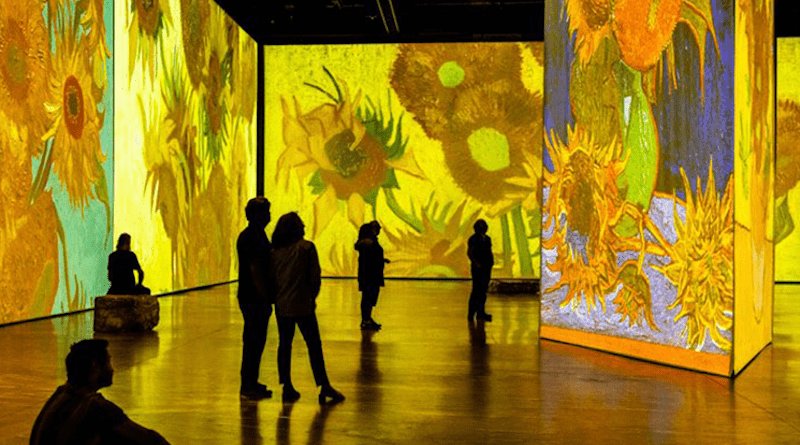Artistic License: Fresh Ideas Attracting New Audiences To Art
By IESE Insight
The pandemic seriously impacted in-person cultural events — museum-, concert-, theater- and movie-going were decimated — but their consumption grew online. This accelerated a trend that had begun well before 2020. Digitalization and changing public tastes and habits have the cultural sector scrambling for fresh ideas and new audiences. The climate crisis has forced more artists to question their business models. And the crypto wave is transforming how people enjoy art. Check out the creative ways that the artistic experience is being innovated.
Art-ificial experiences
Non-fungible tokens (NFTs) are the digital equivalent of a physical collectible. Content creators sell their one-of-a-kind works to clients using unique tokens in which the proof of purchase is coded into the artwork itself. NFT marketplaces like Open Sea are springing up all the time, and NFTs have become big business.
Sometimes the pieces are collectively owned, as happened with Pak’s The Merge where thousands merged their tokens to buy a unit of the digital artist’s work for a whopping $91.8 million through Nifty Gateway.
Crowdfunded experiences
When Sotheby’s in New York auctioned an original copy of the U.S. Constitution, a DAO or decentralized autonomous organization made up of 17,000 people tried to buy it between them, also using tokens. In the end, they were outbid and their tokens were refunded. But the experiment highlights an interesting trend of peer-to-peer online communities joining forces for a single purpose. It doesn’t get more “We the people” than that!
Sustainable experiences
Because live concerts can be major polluters, the British band Coldplay announced a carbon-neutral tour in 2022. Through a careful audit of their carbon footprint, they pledge to cut direct emissions by 50% over their 2016-17 tour and they’re taking a creative approach to powering their production: A kinetic floor in and around the stadium will convert fan movements into energy to power the show.
Immersive experiences
Ever just wanted to climb inside a painting? Now you can: immersive exhibitions have become a lucrative new phenomenon. By combining virtual reality and wraparound projections, the public can walk in Van Gogh’s sunflower fields (pictured above) or the Sistine Chapel where you can see Michelangelo’s masterpiece up close and personal, without the Vatican crowds.
Enhancing experiences through analytics
It’s a classic problem: visitors pack in front of one famous artwork while another lesser-known painting nearby is ignored. How distances between paintings, time spent in the museum and visitor congestion affect which paintings get seen is something that operations professor Victor Martínez de Albeniz has analyzed, using visitors to the Van Gogh Museum in Amsterdam. His paper with Ali Aouad and Abhishek Deshmane reveals how to design layouts for sequential experiences with application to museums.

